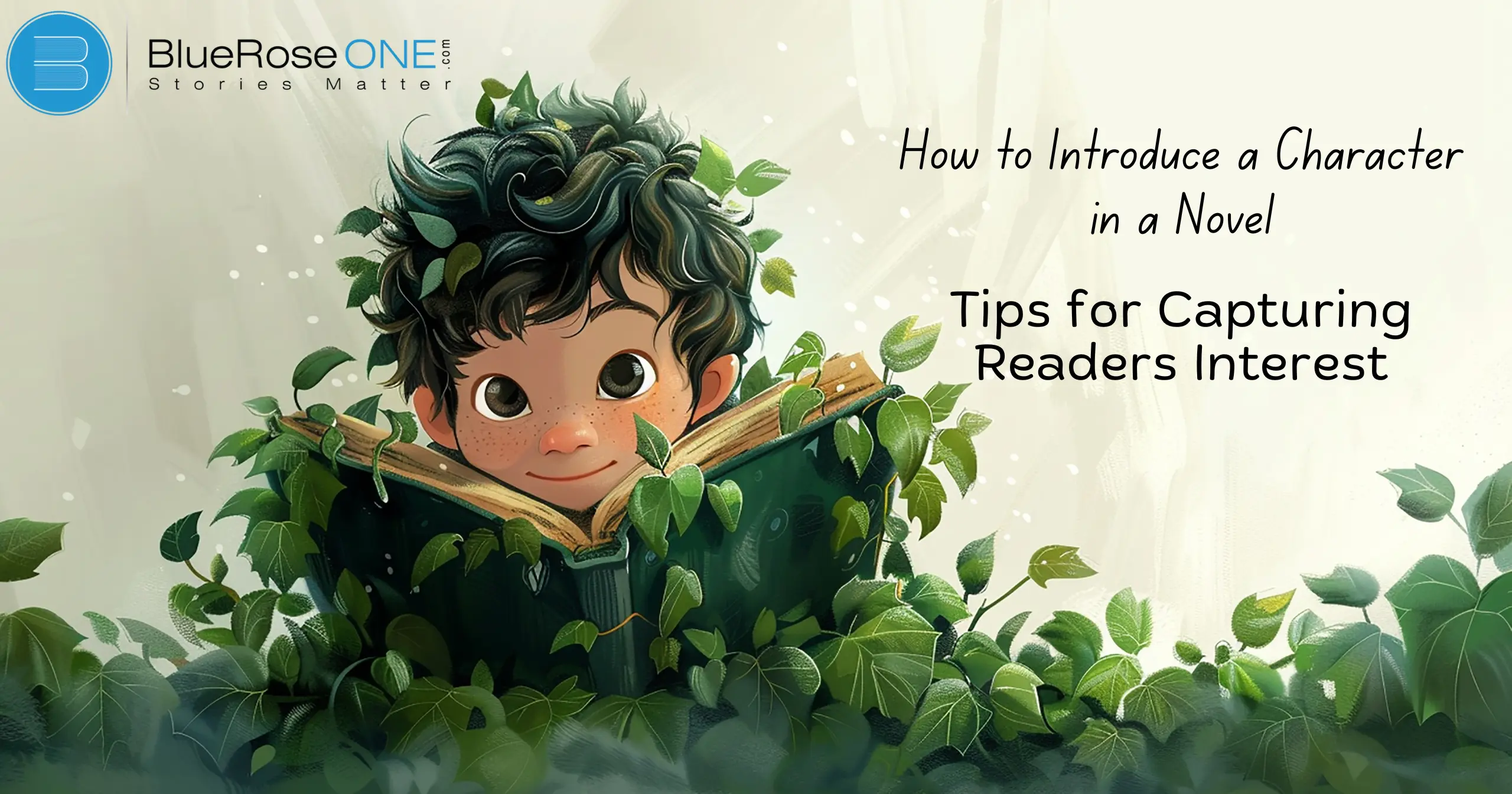Introducing a character in a story entails more than simply writing a name on paper. It’s about crafting a scene that captures your readers’ attention and establishes the tone for the character’s journey.
Think of it as the first handshake: firm, memorable, and significant. A powerful character introduction not only captures readers’ attention, but also creates a connection that makes them want to follow the character’s tale.
In this post, we’ll look at approaches and strategies for introducing characters in a way that captures and interests your audience.
Understanding the Role of Character Introductions
Why Character Introductions Matter
First impressions are important in both real life and narrative. A well-written character introduction can pique your readers’ interest from the start, making them curious about the character’s background, motives, and future. It creates the character’s personality, morals, and problems, as well as the tone of the story.
The Impact of a Memorable Character Introduction
A memorable introduction leaves a lasting impression. Consider the characters who have stayed with you long after you’ve finished a novel; typically, this is due to their compelling and memorable introduction. A great introduction, whether through vivid description, interesting dialogue, or exciting action, can help your character become memorable to readers.
You may also read: List of 10 Best Libraries in Lucknow for Bookworms
Key Elements of a Compelling Character Introduction
Establishing the Character’s Role in the Story
Clarifying a character’s position early on helps readers grasp their importance and what to expect from them. Whether the character is the protagonist, antagonist, or a supporting character, hinting at their role in the plot during their debut sets the tone for their journey.
This can be accomplished through actions, dialogue, or even subtle descriptions that inform readers about their intentions and how they will affect the plot.
Setting the Tone and Mood
Setting the tone and mood of a character introduction contributes to the overall ambiance of your story and shapes how readers see the character.
By carefully selecting descriptive phrases and details, you can create a sense of mystery, excitement, or tension that will captivate readers.
For example, introducing a character in a dimly lit, scary setting might quickly establish a suspenseful tone, whereas a bright, cheerful setting may imply a more light-hearted or hopeful atmosphere.
Creating a Strong Visual Impression
The Power of Descriptive Language
Descriptive language is an effective method for presenting a character since it creates a vivid visual impression in the reader’s imagination. You may create a vivid picture of a character by carefully selecting phrases that highlight physical traits, attitudes, and actions.
This not only makes the character more memorable, but it also deepens their personality, bringing readers into the story and making them feel linked to the character from the beginning.
Balancing Description with Action
When introducing a character in a novel, it is critical to balance description with action in order to leave a strong visual impression.
Instead of overwhelming readers with detailed details, combine physical characteristics with actions that reflect personality. For example, a character’s uneasy habit of pulling on their sleeve can express concern more effectively than a lengthy description of their appearance. This strategy keeps the story interesting while also allowing readers to readily visualize the character.
You may also read: A Complete History of the Man Booker Prize: Past Winners & Notable Books
Techniques for Introducing Characters
Start with Action
Introducing a character through action is an effective approach to immediately capture the reader’s attention. By capturing the character in the midst of something, whether it’s a daring escape, a calm act of kindness, or an impassioned fight, you may portray their personalities and motivations without using extensive explanations.
This strategy allows readers to rapidly identify with the characters and establishes the tone for their participation in the story.
Reveal Through Dialogue
One effective technique to introduce characters is to disclose their characteristics and past through dialogue. Instead of precisely describing a character, let them speak and interact with others to demonstrate who they are.
For example, a character’s tone, word choice, and replies might disclose information about their personality, background, and relationships.
This strategy allows readers to learn about the character naturally, making the introduction feel more dynamic and interesting. Dialogue-driven reveals contribute to a vivid, immersive experience.
Use the Setting to Reflect the Character
One of the most effective ways to introduce a character in a novel is to use the location to reflect them. If a character is fastidious and well-organized, for example, their personality can be visually represented by setting them in a nicely prepared, well-maintained space.
On the other hand, an untidy and congested setting could draw attention to a character’s disorderly or turbulent disposition. Readers are given instant insight into a character’s nature when the location is in line with their attributes, which makes the introduction more interesting and poignant.
Introduce Through Another Character’s Perspective
Introducing a character from the viewpoint of another character might add interest to your narrative. By using this strategy, readers are able to view the new character from a different perspective, which adds intrigue and instant context.
A protagonist’s description of a new acquaintance, for instance, can either inspire admiration or distrust in the reader about that character.
This approach makes the character’s introduction feel more organic and multi-layered by adding depth and revealing significant features without the need for direct explanation.
Show the Character’s Inner Thoughts
Give readers a glimpse into a character’s mind to captivate them completely. This method forges a close connection by letting readers in on the thoughts and feelings of the character.
Use a stream-of-consciousness or internal monologue to express their conflicts, desires, or worries. This mentality check makes the character more realistic and approachable by enabling readers to comprehend their motivations and personal challenges. You add vividness and compellingness to the character’s experiences and feelings by revealing these inner ideas.
Create a Mystery Around the Character
One of the most effective ways to introduce a character in a novel is to create a sense of mystery surrounding them. You can pique readers’ interest and persuade them to continue reading by omitting specific information or making vague references to a past that is hidden.
This method is most effective in intricate or suspenseful storylines where the background or true motivations of the character are gradually exposed.
You can create curiosity and keep readers interested in the story as it develops by gradually revealing these mysteries to them.
You may also like: The Selection Process for the Nobel Prize in Literature: An Inside Look
Avoid Clear of Common Pitfalls
Overloading with Information
Refrain from providing your readers with too much information at once when introducing a character. Overloading the reader with information about a character’s appearance, past, and personality may become annoying and make them lose interest.
Rather, make important characteristics increasingly apparent through interactions with other characters, dialogue, and actions. As a result, readers are able to relate to the character in a natural way, which keeps them interested and eager to find out more as the plot develops.
Relying Too Heavily on Clichés
Character introductions that rely too much on clichés may come across as dull and uninspired. Clichés are overdone expressions or concepts that are unoriginal and don’t hold the reader’s attention.
To give an example, presenting a character as “the mysterious stranger with a dark past” is cliched and unoriginal. Make an effort to write distinctive, vivid descriptions that set your characters apart from the competition if you want to keep your readers interested.
Ignoring Character Development
Character development neglect is a typical mistake that can result in a dull and uninteresting novel. Throughout the book, your characters should develop, alter, or reveal new facets of who they are.
Characters may come out as one-dimensional without this development, which makes it difficult for readers to identify with them. Make sure your characters have distinct arcs and go through significant changes that correspond with their struggles and experiences in the narrative to prevent this.
Examples of Memorable Character Introductions
Classic Literature Examples
Many of literature’s most memorable characters are introduced in ways that immediately capture the reader’s interest. For instance, consider the introduction of Mr. Darcy in Jane Austen’s Pride and Prejudice. His aloof demeanor and perceived arrogance set the stage for his complex relationship with Elizabeth Bennet.
Modern Literature Examples
Modern literature also offers great examples of character introductions. In Harry Potter and the Sorcerer’s Stone, J.K. Rowling introduces Harry in a way that immediately endears him to the reader his loneliness and mistreatment by the Dursleys make readers sympathize with him, setting the stage for his journey as the series’ hero.
Film and TV Examples
Film and television provide visual examples of character introductions. Think of how Indiana Jones is introduced in Raiders of the Lost Ark with his iconic hat, whip, and a daring escape from a booby-trapped temple. This introduction tells viewers everything they need to know about the character’s bravery, resourcefulness, and adventurous spirit.
Conclusion
Writing a compelling character introduction is a skill that can define your novel’s overall tone. You may write captivating and memorable openings by emphasizing essential components like action, dialogue, scene, and description.
Steer clear of frequent mistakes like information overload and clichés, and make an effort to present your characters in a way that piques readers’ interest. Recall that creating a strong bond between your characters and readers begins with a strong character introduction.
















